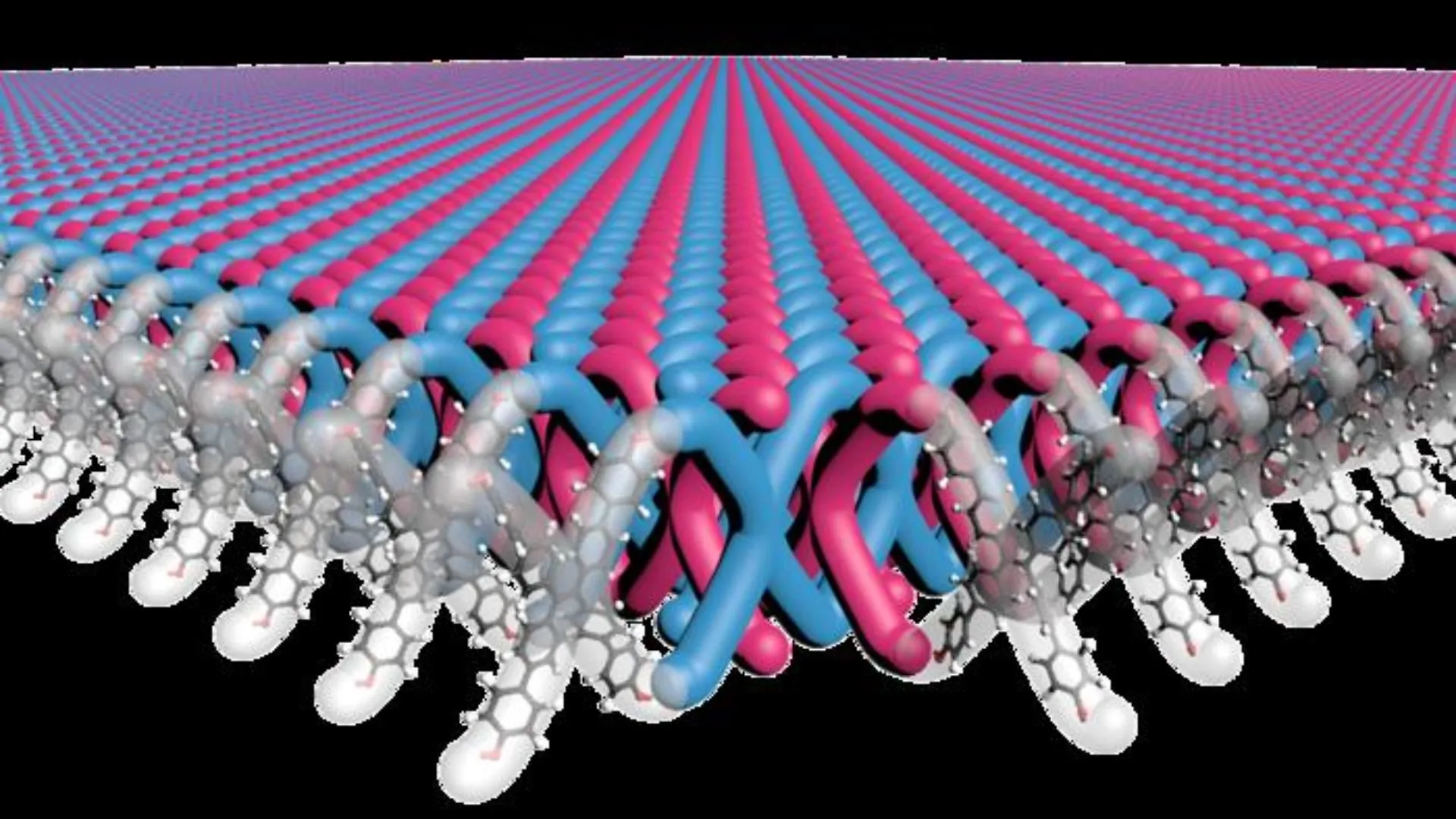I’m sure this is real, but I see a headline like that and I think of schoolyard talk. Like, nuh uh, my armour has 100 trillion bonds, you can’t shoot me.
I skimmed the article, scrolled down but people hasn’t mentioned its mechanically Chain mail in atomic scale yet? Did I read it wrong?
Anyone know the cost per kilogram?
Edit: Apparently $20,000/kg
I can’t wait to find out how toxic this is.
They will make it into a mandatory dress uniform for school children.
Good news, it’s completely non toxic.
Bad news, it costs 2 million dollars per square foot.
The pentagon will now take your whole paycheck.
Thank you for your support, patriot.
Good news, it costs 2 million dollars per square foot, so they won’t militarise the police further with it.
Well not immediately… Years from now when the military develops something even better then this will all become surplus and sold off to SWAT teams etc. for next to nothing.
The article says the process is scalable.
With these bonds so dense, I want to imagine that it would actually be quite non-toxic as these is little to react with.
Then again, I’m not a bio chemist
i could make stronger
Me when the only thing I eat all day is weed and cheese.
I did your mom stronger
Why don’t they just use diamond, the hardest metal?
I thought Dragonforce was the hardest metal known to man?
Lol, this
Hardness isn’t the best thing to have in armor. In fact, extreme hardness means extreme brittleness.
Tensile strength is more desirable in armor. That’s the sort of strength that a string or rope, or Kevlar will have.
Those can stretch a bit before breaking.
Kevlar will stretch a bit when catching a bullet, this does a few things, but importantly it slows the bullet before stopping it.
So this new material will likely show extreme tensile strength rather than hardness.
Correct. 🙂 Reminds me of when I wanted new tires & I was complaining about how some tires were rated for a criminally short life. I wondered which ones lasted the longest.
The mechanic then remarked that sure, they can make tires that last a hell of a long time & never puncture. But the ride would be so terrible because the tires would be tough, stiff, would work your suspension harder, and it would cost a fortune to boot. It’s not worth it. There are multiple material, usage considerations when making a product. Really makes you appreciate the experts in their various fields.
…and uses it to oppress and/or disenfranchise poor people
You mispronounced promote American interests.
America bad
Indeed
I don’t know if this will actually pan out the way that they imply in the title; armor needs to have a lot of different characteristics in order to be practical. As in, resistance to heat and cold, resistance to acids, alkalines, petroleum distillates, salts, UV, and oxygen, and also resist deformation. Multiple materials have displays significant promise for armor, but had a very short lifespan in real-word conditions. For instance, there was a material trademarked as Zylon that was supposed to be better than Kevlar, and it was used extensively by Second Chance (a body armor company); several cops were killed when their armor failed, and the armor failed because of exposure to sweat and ambient heat.
Yeah, this is a super cool development, but remember that everything that comes out at this stage is hype.
The armor works perfectly fine as long as it’s not exposed to oxygen. But when’s that ever going to happen?
That by itself isn’t terrible, that could still be used if it is sealed in something like an era brick if it’s good enough.
Yes… that’s why they use the word “could”. This is how research works and what reasonable science reporting looks like. There were no promises or wild claims made in the article.
Layer it with Kevlar and good?
It really depends on whether it can be made to meet all the other criteria required for armor. I think that it’s too early to make any good predictions.
This is still basic research, it’s not close to commercialization.
100 trillion barry bonds
At least it’s not 100 trillion James Bonds.
Not if Hank Scorpio has anything to say about it.
So this is what John Wick had in his suit
I loved those movies but they went way to hard into that suit in the later movies. I got ridiculous lol.
My favorite part was when he held the jacket up like a curtain. The material may be bullet proof, but the bullet will still push it out of the way like that lol.
They did Rambo the franchise a bit.
Same with the Fast&Furious it used to be about import vs muscle and real street racing. Then it became jumping hyper cars from falling buildings to the next building over and turned to shit. Like most over milked series.
Waiiiit, was it actually meant to be about import vs muscle, like that was it’s intention? Or did they just happen to do that.
Now this is a technology post!
I don’t know if I’d call materials science technology, exactly, but it’s certainly more on topic than “business but at a tech company” posts.
What would you say is technology? Materials science isn’t technology, but what about things made out of the materials created by materials science?
Yeah, everyone knows that technology only involves computers and they’re basically just made out of metal and not some fancy material.
Of course material science is technology lol
Wow what a stupid comment. Materials science is technology.
Cutting edge materials science and manufacturing is 100% technology.
I only acknowledge technological advancements made in writing utensils. Keyboards and Typewriters do NOT count. So don’t even get me started
Yeah yeah we get it, everyone is wrong but you and all that.
That’s ludicrous, because that’s true for me and not them.
deleted by creator
Could this be used to make a space elevator?
No.
What about a space escalator?
Escalator is smart, because if it breaks, you can still walk to space.
I heard it was for lifts only
I think I remember reading that a structure strong enough would have to be wider than the earth
The stronger the material the thinner it could be.
There are a lot of properties in the word ‘stronger’ though.
It would probably be strong enough, but not viable to manufacture.
Extreme doubt on strong enough. The author of this article barely understands the words they are using. Cool it strain hardens, so do so many other materials. Cool it’s tough like many other materials. Wow it has more links than others. No actual numbers about toughness, yield, ultimate strength, cycle limits, etc. It’s great research, but it absolutely isn’t going to magically solve the space elevator issue.
Space elevator companies seem to think that materials exist that are strong enough, just that they are not long enough.
https://www.isec.org/space-elevator-tether-materials
Very much layman conjecture, but my assumption is that this material is stronger than carbon nanotubes and graphene.
Any company will market that its ideas are possible. The article you linked is promising, but take it with a huge grain of salt. They are moving the goalposts the whole article. Flat graphene is a great material for space elevators, but it can’t currently be created without defects. Polycrystaline means the graphene created includes defects sort of. It means the graphene they created that is km’s long has shitloads of places where cycle loading will cause it to fail way under (like 10%) of its expected load carrying capacity.
Edit: I want this technology to exist. My MS in mechanical engineering focused in materials science tells me we are quite far from it happening.
“the manufacturing process of the 2D polymer is highly scalable”
First line of the article
Ok but there’s ‘high’ and then there’s ‘low earth orbit’.
That’s what my dispensary tells me too
My man!
Scalability is not viability.
hello I would like to order a thousand full plate mails













